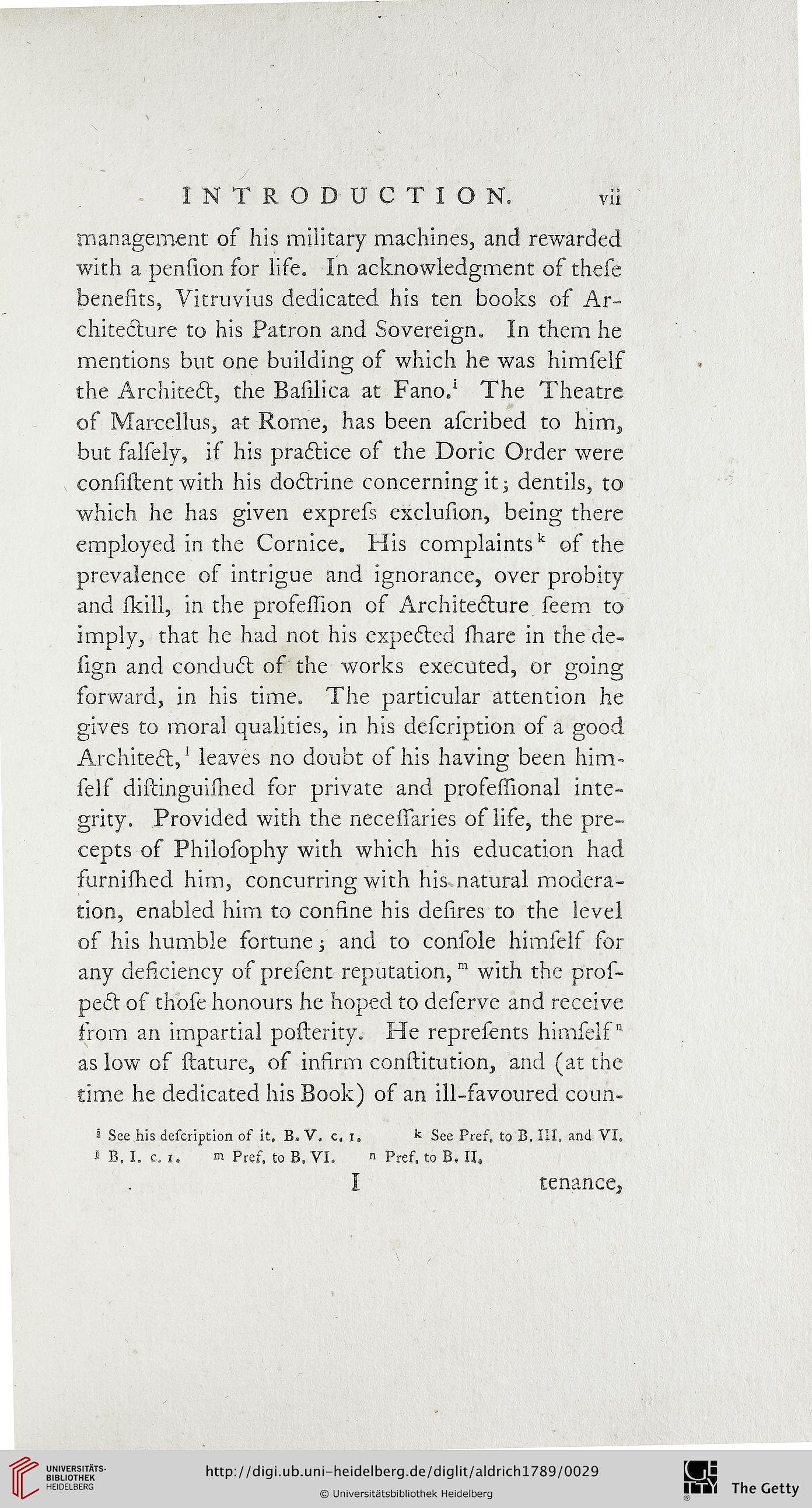INTRODUCTION,
vii
management os his military machines, and rewarded
with a pension for life. In acknowledgment of these
benefits, Vitruvius dedicated his ten books of Ar-
chitecture to his Patron and Sovereign. In them he
mentions but one building of which he was himself
the Architect, the Basilica at Fano.1 The Theatre
of Marcellus, at Rome, has been ascribed to him,
but falsely, if his practice os the Doric Order were
consident with his doCtrine concerning it 5 dentils, to
which he has given express exclusion, being there
employed in the Cornice. His complaintsk of the
prevalence of intrigue and ignorance, over probity
and skill, in the profession of Architecture seem to
imply, that he had not his expeCted share in the tie-
sign and conduCt of the works executed, or going
forward, in his time. The particular attention he
gives to moral qualities, in his description of a good
Architect,1 leaves no doubt of his having been him-
self distinguished sor private and professional inte-
grity. Provided with the necessaries of life, the pre-
cepts of Philosophy with which his education had
furnished him, concurring with his natural modera-
tion, enabled him to confine his desires to the level
of his humble fortune; and to console himself for
any deficiency os present reputation, m with the pros-
peCt os those honours he hoped to deserve and receive
from an impartial posterity. He represents himself11
as low of silature, of infirm constitution, and (at the
time he dedicated his Book) of an ill-favoured coun-
• See his description of it, B. V. c. i, k See Pref, to B, III. and VI.
1 B, I. c, 1. m Pres, to B, VI. n Pref. to B. II,
I
tenance.
vii
management os his military machines, and rewarded
with a pension for life. In acknowledgment of these
benefits, Vitruvius dedicated his ten books of Ar-
chitecture to his Patron and Sovereign. In them he
mentions but one building of which he was himself
the Architect, the Basilica at Fano.1 The Theatre
of Marcellus, at Rome, has been ascribed to him,
but falsely, if his practice os the Doric Order were
consident with his doCtrine concerning it 5 dentils, to
which he has given express exclusion, being there
employed in the Cornice. His complaintsk of the
prevalence of intrigue and ignorance, over probity
and skill, in the profession of Architecture seem to
imply, that he had not his expeCted share in the tie-
sign and conduCt of the works executed, or going
forward, in his time. The particular attention he
gives to moral qualities, in his description of a good
Architect,1 leaves no doubt of his having been him-
self distinguished sor private and professional inte-
grity. Provided with the necessaries of life, the pre-
cepts of Philosophy with which his education had
furnished him, concurring with his natural modera-
tion, enabled him to confine his desires to the level
of his humble fortune; and to console himself for
any deficiency os present reputation, m with the pros-
peCt os those honours he hoped to deserve and receive
from an impartial posterity. He represents himself11
as low of silature, of infirm constitution, and (at the
time he dedicated his Book) of an ill-favoured coun-
• See his description of it, B. V. c. i, k See Pref, to B, III. and VI.
1 B, I. c, 1. m Pres, to B, VI. n Pref. to B. II,
I
tenance.





